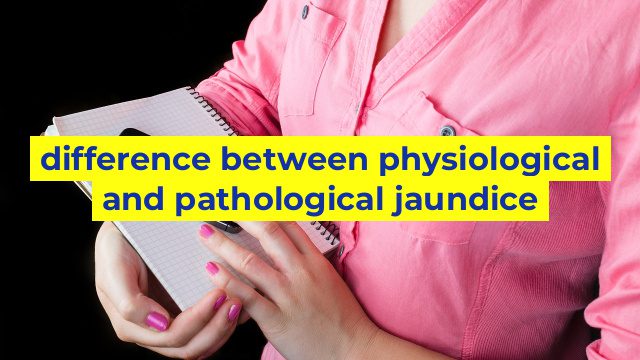The Difference Between Physiological and Pathological Jaundice
Jaundice is a condition characterized by yellowing of the skin and eyes caused by high levels of bilirubin in the blood. Bilirubin is a yellow pigment produced when red blood cells break down. Under normal circumstances, the liver processes bilirubin and excretes it in the stool. However, when the liver is unable to do so, bilirubin builds up in the blood, leading to the development of jaundice. Jaundice can be classified into two types: physiological and pathological. Let’s take a look at the differences between the two.
Physiological Jaundice
Physiological jaundice is a normal occurrence in newborn babies. It appears within the first few days of life and typically resolves on its own within a couple of weeks. This type of jaundice is the result of the baby’s liver being immature and unable to process bilirubin efficiently. The excess bilirubin causes yellowing of the skin and eyes, but it is usually benign and self-limiting. Physiological jaundice does not cause any harm to the baby and requires no treatment. It is common, affecting up to 60 percent of full-term babies and 80 percent of premature babies.
Pathological Jaundice
Pathological jaundice, on the other hand, is a serious condition that requires prompt medical attention. It is caused by an underlying disease or disorder that affects the liver’s ability to metabolize bilirubin. Pathological jaundice can occur at any age, from newborns to adults, and usually requires treatment to prevent complications. Some common causes of pathological jaundice include:
– Gilbert’s syndrome: a genetic condition that impairs the liver’s ability to process bilirubin
– Hepatitis: inflammation of the liver caused by a viral infection
– Liver damage: caused by alcohol consumption or medication toxicity
– Hemolytic disorders: conditions that cause the destruction of red blood cells, leading to an increase in bilirubin levels.
Pathological jaundice can lead to a range of complications, including brain damage, hearing loss, and even death. Treatment depends on the underlying cause of the condition and may involve medication, light therapy, or surgery.
Conclusion
In summary, physiological and pathological jaundice differ in their causes, severity, and treatment. While physiological jaundice is a benign and self-limiting condition that affects newborns, pathological jaundice is a serious condition that requires medical attention. If you notice yellowing of the skin or eyes, it is important to seek medical advice to determine the cause and appropriate treatment.
Table difference between physiological and pathological jaundice
| Physiological Jaundice | Pathological Jaundice |
|---|---|
| Occurs in newborns within the first week of life | Occurs after the first week of life |
| Associated with increased breakdown of red blood cells, immature liver function, and breastfeeding | Can be caused by a variety of factors such as liver disease, infections, or metabolic disorders |
| Usually resolves on its own without treatment | Requires medical intervention and treatment of underlying cause |
